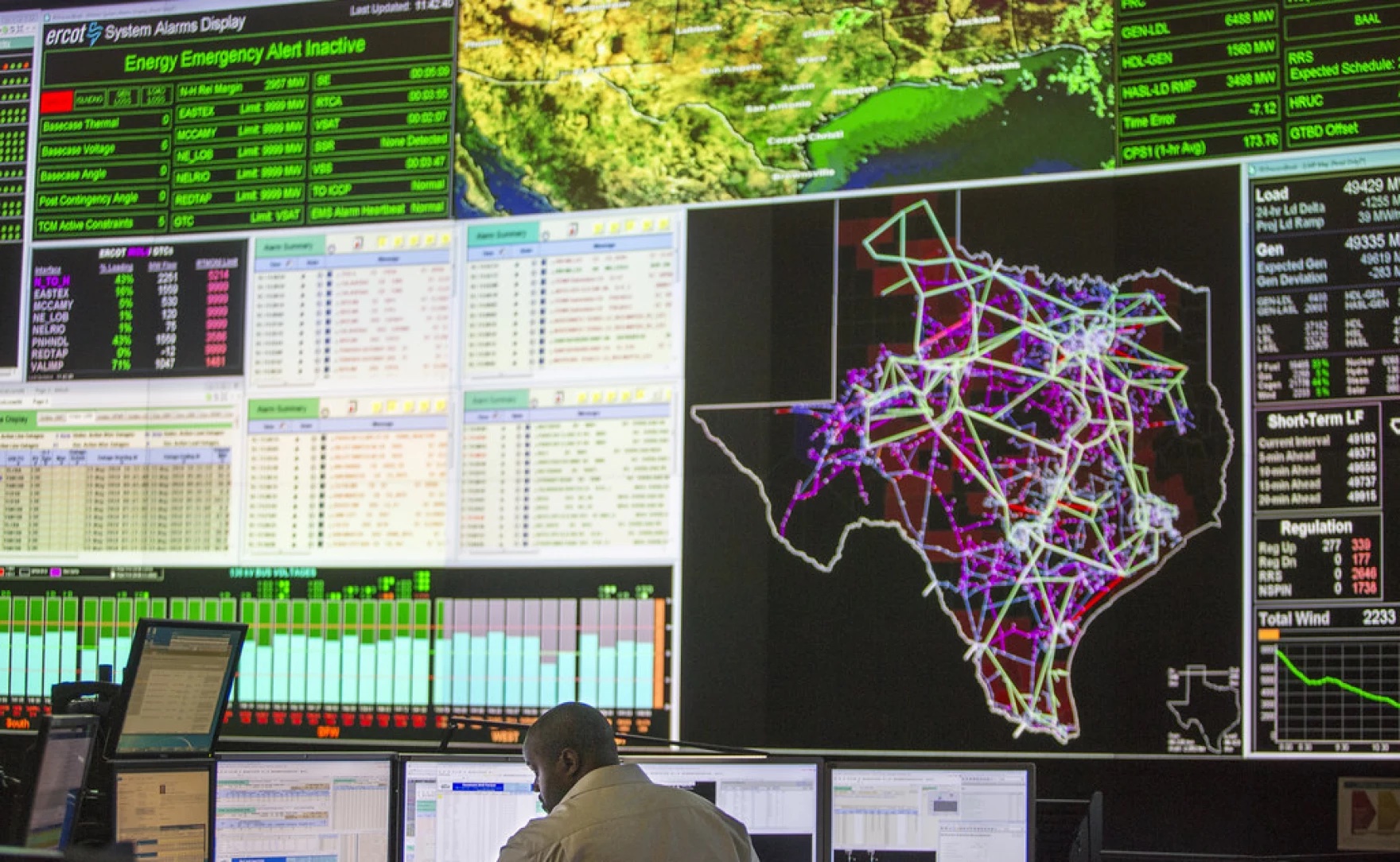It’s been nearly a year since a winter storm led to deadly power outages across most of Texas. In the months that followed, we learned the electric grid that serves almost the entire state was just minutes away from complete failure.
So how did we get to that point? Our colleagues at KUT Austin dove deep into answering that question. Over the next four days, Texas Standard is bringing you what they found in a project they called The Disconnect.
When a massive winter storm came through Texas in February, causing days-long blackouts across the state, many people learned for the first time that Texas has its own electric grid.
In the rest of the continental U.S., power plants connect to a larger grid. There is one grid that serves the Eastern half of the country, and one that powers the Western half. Energy produced in one state can be used in another, and power companies can buy energy from out of state.

But not in Texas. Here, electricity is generated and used only within state lines.
And that’s one reason the February blackouts lasted so long. With minimal connection to power plants in other states, Texas didn’t have access to electricity produced in places where snow and ice weren’t shutting things down.
So why is Texas on its own grid?
First, some history
For decades after the first lightbulb was turned on in 1879, electricity was a novelty. But eventually, cities started using it for street lights, street cars and powering things like ice makers in their homes. During this time, the electric “industry” was just a lot of small power companies selling electricity locally.
“Starting in 1907, states began to regulate power companies,” said Julie Cohn, an energy historian with the Center for Energy Studies at Rice University. “They said: ‘This is becoming an essential service; we want to make sure that it’s provided on a fair basis to the citizens of our state. So we will say who can operate where and how much you can charge your customers for your electric service.'”
People had started to depend on electricity, rather than viewing it as a novelty.
But while many states decided to regulate their local power companies, Texas did not. Instead, power companies here started to merge into bigger companies and share power for the first time. Texas’ electric grid started coming together.
Eventually, electric companies across the U.S. started to form monopolies, leading to exorbitant rates. Through his New Deal, President Franklin Delano Roosevelt sought to prevent consumers from being taken advantage of by the industry. In 1935, he signed the Public Utility Holding Company Act, which allowed the federal government to regulate and even break up large utility companies. This helped protect consumers from unreasonable prices.
But the new federal regulations applied only if a power company in one state was buying and selling electricity to another state. Texas decided at this point not to let its grid connect with power companies in neighboring states. That way, the state could avoid federal laws that dictated how energy was bought, sold and distributed.
“You can imagine why it was very attractive to these Texas power companies to say, ‘OK, forget it. We’re not going to sell power to anybody in Louisiana or Oklahoma or whatever,’” Cohn said. “‘We’re just going to form interconnected systems inside Texas and operate as we wish.'”
Texas power companies shared electricity with each other, but the sharing stopped at the state line.
Staggered demand
While many in Texas might like to think the state was unique in trying to avoid federal regulations, that wasn’t the case. After the rules went into effect, a lot of power companies tried to keep their energy sales within state boundaries.
But other states weren’t able to produce enough electricity to sustain that effort and serve their residents reliably. Texas became the only state in the continental U.S. with its own grid. It now covers about 90% of the state.

“Texas, as everyone who lives [here] knows, is a really big state,” Cohn said. “And not only are we big, but we’re wide. We have two time zones. So the sun rises an hour later in West Texas than it does in East Texas. And we also have virtually every type of energy resource that’s used nowadays to generate electricity: We have oil, gas, coal, uranium, sunshine and wind.”
That means the demand for energy is staggered. When people wake up in East Texas and turn on their lights and their coffee makers, many people in West Texas are still asleep. The grid is not overloaded. In most other states, residents are using energy at the same time. While power plants outside Texas wanted to be independent, they eventually connected with plants in other states so there’d be dependable power.
But just because Texas typically doesn’t overload the grid, doesn’t mean it’s not possible. That’s what happened in February: The state couldn’t produce enough energy to meet demand and had no way of getting electricity from anywhere else.







